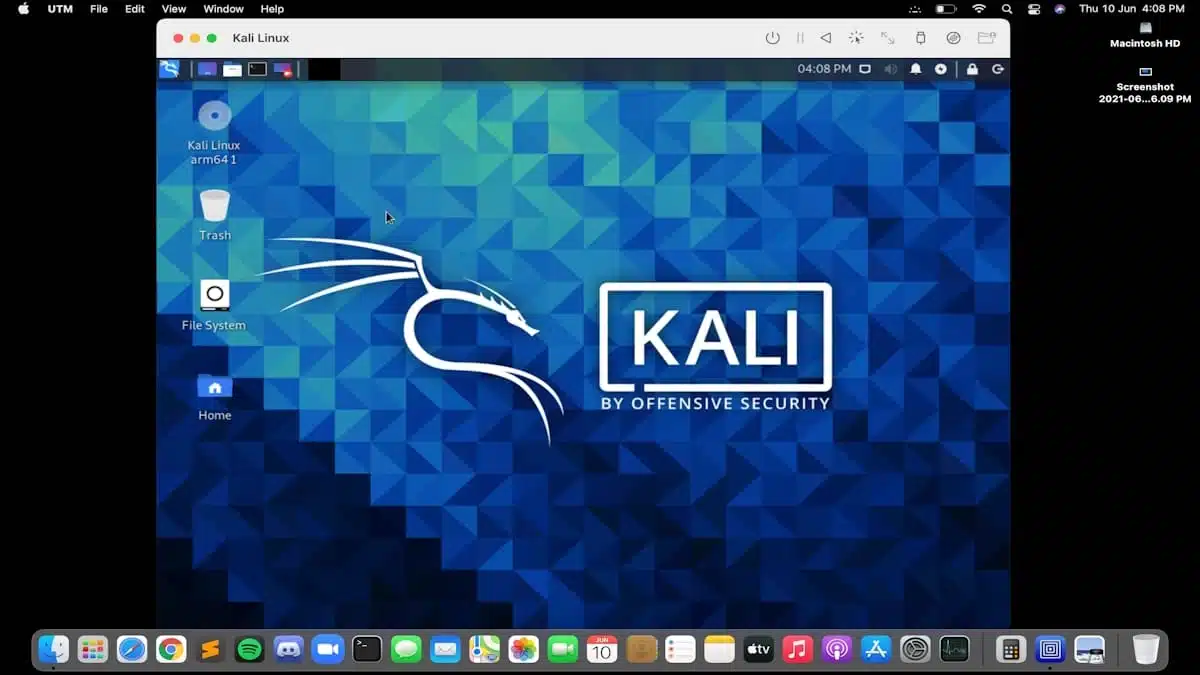If you experience any difficulty in accessing content on our website, please contact us at 1-866-333-8917 or email us at support@chicagovps.net and we will make every effort to assist you.

Kali Linux is now able to run natively on macOS, thanks to Apple’s containerization framework introduced during WWDC 2025. This advancement allows developers and security professionals to utilize Kali Linux directly on their Macs without relying on Docker Desktop or third-party virtualization tools.
This new feature is present in macOS Sequoia 15.5 and will be fully integrated in the upcoming macOS “Tahoe” 26. It enables Apple Silicon Macs to operate OCI-compliant Linux distributions like Kali Linux within lightweight and secure virtual machines.
Apple’s container system resembles the Windows Subsystem for Linux 2 (WSL2). It includes a command-line interface called "Container," which works with the new containerization framework. Underneath, it creates a small virtual machine for each container using Apple’s Virtualization.framework and Hypervisor.framework, providing robust isolation and fast startup speeds while offering a user experience similar to Docker—all with native macOS components. Importantly, each container operates in its own secure VM, enhancing security.
The system includes:
To get started, users must install the CLI tool via Homebrew on machines running macOS Sequoia 15.5 or later on Apple Silicon (arm64). The installation command is:
brew install --cask containerOnce installed, initiate the container framework with:
container system startTo run Kali Linux within a container, execute:
container run --rm -it kalilinux/kali-rollingOn the first launch, this command installs a minimal Kata Containers kernel, which operates inside the VM. Users will then access a fully functional Kali Linux shell equipped with the latest Linux kernel, ready for penetration testing or development.
Additionally, users can mount their Mac’s working directory into the container with:
container run --remove --interactive --tty --volume $(pwd):/mnt --workdir /mnt docker.io/kalilinux/kali-rolling:latestThis command allows Kali Linux to read and write files directly from the Mac.
While this feature holds great promise, it is still in developer preview, and users may encounter a few limitations, particularly regarding network interfaces on macOS Sequoia 15. For instance, containers may not receive an IP address or might lose DNS access.
The Kali Linux development team has acknowledged these challenges and recommends consulting Apple’s documentation for troubleshooting advice. They noted, "Currently there are a few known limitations of Containerization, especially using macOS ‘Sequoia’ 15, such as containers’ network access not getting an IP address or no network access."
Apple’s introduction of containerization signifies a substantial shift towards supporting Linux workflows natively within macOS. It provides near-native performance and enhanced security features compared to Docker or traditional virtual machines, effectively bridging the gap between Mac hardware and Linux toolsets.
For further information, refer to the Kali Linux blog post.
ChicagoVPS is your gateway to unparalleled hosting solutions. Our state-of-the-art datacenters and powerful network ensures lightning-fast speeds and uninterrupted connectivity for your websites and applications. Whether you’re a startup looking for scalable resources or an enterprise in need of enterprise-grade hosting, our range of plans and customizable solutions guarantee a perfect fit. Trust in ChicagoVPS to deliver excellence, combining unmatched reliability and top-tier support.
For Inquiries or to receive a personalized quote, please reach out to us through our contact form here or email us at sales@chicagovps.net.
